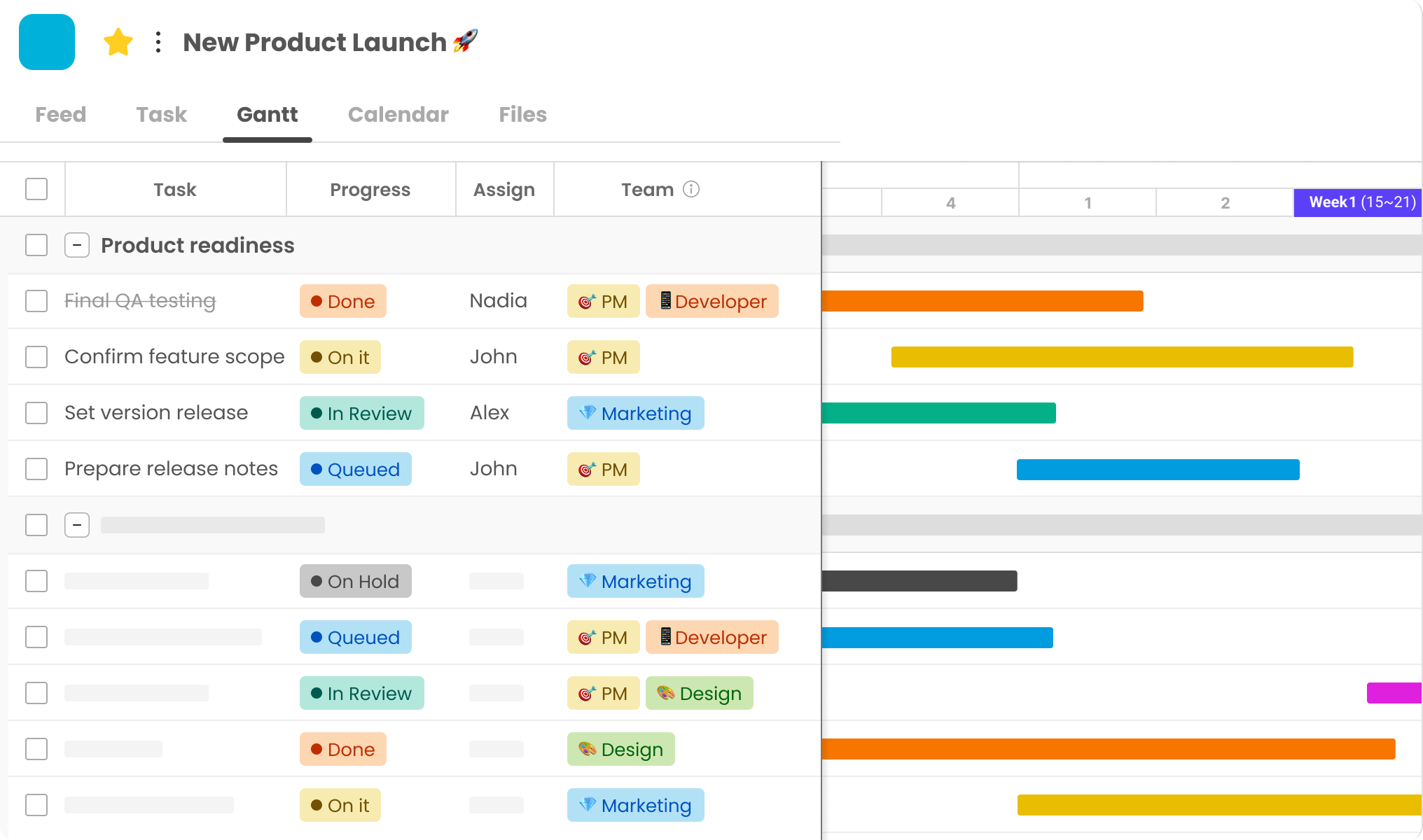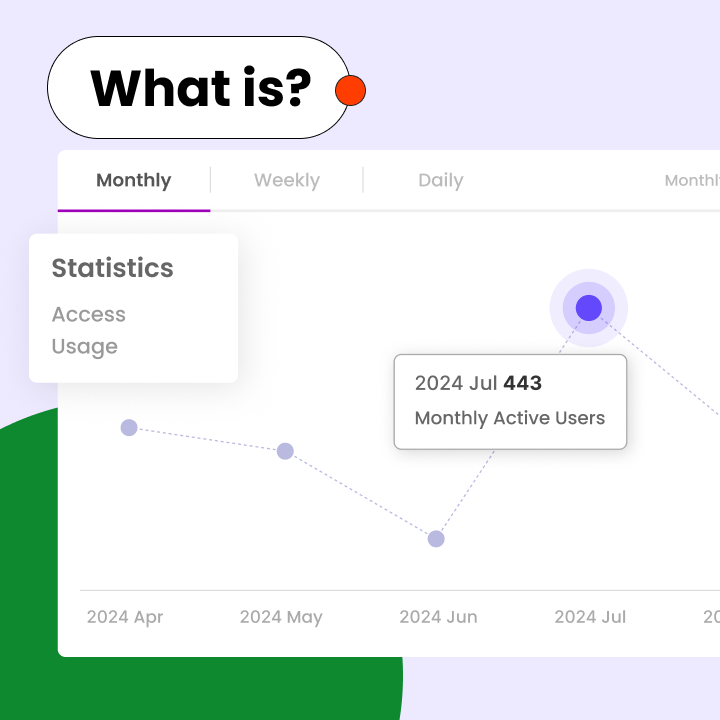Starting a project becomes much easier when you establish clear goals. These goals define your objectives and provide a guiding light for the team. Without them, team members may guess their way through tasks, miss deadlines, or lose focus. Well-defined goals also serve as a progress tracker, allowing you to see how far you’ve come and keeping everyone aligned.
This guide clarifies the difference between project goals and objectives in straightforward terms. You’ll also find examples of project goals to inspire your own writing. These examples simplify planning, help maintain focus, and lead to better project outcomes. Anyone managing a project can use them to stay organized and on track.
What Are Project Goals and Objectives?
Goals and objectives are essential for keeping the team aligned. A goal represents the overall vision of what the team aims to achieve, while an objective breaks down the daily tasks that lead to that goal. Setting clear objectives is like laying down tracks on a winding road; they guide the team and keep everyone moving in the right direction.
The Difference Between Goals and Objectives
A project goal is the ultimate destination, while objectives are the smaller tasks you complete along the way. Breaking down a large goal into manageable tasks makes the journey less daunting. This approach eliminates guesswork, clarifies responsibilities, and shows everyone how far you’ve progressed.
Goals vs. Objectives in Project Management
A project goal acts as a compass, directing the team toward their destination. Objectives complement this by providing specific deadlines, metrics, or action steps. For example, stating that customer service will improve is broad, but a practical objective would be to respond to each email within 24 hours.
Goals vs. Scope, Milestones, Deliverables
Goals represent the underlying purpose of a project. The scope outlines all the tasks needed to achieve that purpose. Milestones serve as markers of progress, while deliverables are the tangible results you achieve at the end of the project.
Why Project Goals and Objectives Matter
Starting with clear goals and objectives gives your project a solid foundation. It transforms the plan from a guessing game into a structured process that everyone understands. This clarity prevents mixed messages and keeps the team focused. When targets are well-defined, budgeting and scheduling become manageable tasks rather than uncertain estimates.
Strategic Focus
A clear project goal acts like a compass, consistently guiding the team toward the organization’s mission and objectives for the current quarter and beyond. This alignment ensures everyone is moving forward together.
Measurable Outcomes
Objectives break down a large vision into manageable tasks that can be tracked. Each task has a deadline and serves as a scorecard for progress, allowing the team to identify and address issues early. The metrics also provide evidence that the project is on the right track.
Stakeholder Alignment
When project goals are clearly defined, the entire team understands what needs to be accomplished. This transparency builds trust and encourages commitment during both routine tasks and high-pressure moments. It also reduces the likelihood of unexpected delays or last-minute changes.
How to Write Project Objectives Effectively
Crafting effective objectives helps your team work more efficiently. Clear objectives clarify what needs to be done, guide daily activities, and track progress. Strong objectives support your main project goals from start to finish.
Use the SMART Framework
The SMART criteria provide a straightforward way to create meaningful goals. First, ensure the goal is specific, so there’s no ambiguity. Next, it should be measurable—either you achieve it or you don’t. Goals should also be achievable and relevant, keeping the plan grounded and aligned with the main objective.
Involve Team Members
When launching a new project, involve the entire team in discussions about the end goals. Those who handle daily tasks can quickly identify which ideas are feasible and which are not. Engaging them in drafting the initial plan fosters ownership and enthusiasm.
Keep It Clear and Actionable
Set project goals that can fit on a sticky note. Use simple language to ensure clarity. Assign deadlines to each task and specify the next steps, so the team always knows what to prioritize. Clear instructions eliminate guesswork, allowing team members to integrate tasks into their schedules and maintain momentum.
Common Types of Project Objectives
Every project has unique goals tailored to its specific aims. In project management, objectives guide teams in various areas, such as daily operations, customer satisfaction, and budget management. Understanding these objectives simplifies planning and enhances effectiveness.
Operational Objectives
Operational objectives focus on daily tasks, systems, or processes that enhance work efficiency. They are essential to the core goals of project management. For instance, an operational objective might be to reduce order processing time by 20%. These objectives help teams become faster, more effective, and more efficient.
Customer-Centric Objectives
To keep customers satisfied, companies often initiate projects aimed at improving support and service, proactively addressing potential complaints. Strong project goals consistently target customer happiness and service quality.
Technical/IT Objectives
Technical objectives pertain to software, hardware, or system upgrades within a project. They ensure smooth technology performance and minimize errors. For example, a technical objective could involve updating a system to reduce downtime by 30%. These goals enable teams to utilize better tools and systems.
Financial Objectives
Financial objectives focus on managing money effectively, aiming to save, spend, and earn more throughout the project. Common goals include reducing costs or increasing value. For instance, a financial objective might be to cut project expenses by 10% without compromising quality. These objectives help projects stay within budget and optimize resource use.
Examples of Project Goals and Objectives
Real-life examples can simplify the process of crafting your own project plan. The following examples illustrate how different teams pursue success, providing tasks that align with each type of objective. Use these as a reference when developing your own clear and straightforward plan:
Business Project Objective Example
A business might set a goal to increase online sales within three months. A corresponding objective could be to run three social media ads each week to drive traffic. These project objectives are measurable and straightforward, helping the team maintain focus on a specific outcome.
In this scenario, the goal is broad, while the objective is action-oriented. The team knows exactly what to do and when. These examples are effective in marketing, sales, or planning, making it easier to report results to managers or clients, build trust, save time, and enhance collaboration across departments.
Nonprofit Project Objective Example
A nonprofit organization may aim to increase food donations for the winter season. An objective could be to organize five donation drives in various locations within a month. These project goals guide the team step by step toward achieving their aim, demonstrating to donors and volunteers the impact of their support.
Here, the goal aligns with a larger mission of helping others, while the objectives break it down into manageable tasks. These examples are commonly used by charities, schools, and local groups, fostering teamwork, enhancing community impact, providing clear direction, boosting motivation, and tracking progress.
Product Launch Goal Example
A typical project goal is to launch a new product on schedule. An objective might be to complete product testing and marketing materials two weeks before the launch date. These project objectives ensure everything runs smoothly leading up to the launch. Each team member understands their responsibilities and deadlines.
Planning ahead helps avoid surprises and last-minute stress. Additionally, clear documentation prevents miscommunication among sales, marketing, and design teams. Well-defined tasks combined with clear goals often lead to successful project outcomes.
Internal Team Efficiency Goal Example
A company may set a goal to enhance teamwork and save time on tasks. An objective could be to reduce internal emails by 30% by implementing a shared team platform. These small changes can lead to significant improvements in results, focusing on tools and habits that benefit the team daily.
This approach is particularly useful for HR, administrative, or operational projects. These examples emphasize performance rather than profit. The overarching goal provides a vision, while the objective outlines the path to achieve it. Improved internal systems lead to faster and smoother workflows.
Mistakes to Avoid When Setting Goals and Objectives
Effective planning is crucial, but minor errors can derail your entire project. Many teams encounter issues by confusing project goals with tasks or overlooking important details. Strong project objectives should be straightforward, specific, and measurable. By steering clear of these common pitfalls, you can save time and increase your project’s chances of success:
Setting Vague Goals
Occasionally, a team may propose a goal that is so unclear it lacks definition. For example, saying “fix the website” sounds good until you realize there are no deadlines, targets, or criteria for success. A more precise goal, complete with dates, metrics, and necessary resources, makes it much easier to get started.
Confusing Goals with Deliverables
A project goal focuses on the overall vision you aim to achieve, not just the reports or documents that pile up at the end. If the team starts referring to last-minute updates as the goal, misunderstandings can arise, making planning feel like navigating through fog.
Ignoring Measurability
A goal without measurable criteria is largely guesswork. Assign a firm deadline, include specific metrics, and outline the next steps to clarify your objectives. With these elements in place, tracking progress becomes straightforward, adjustments are easier to implement, and you wake up each day knowing exactly what needs to be accomplished.
Final Thoughts: How Strong Goals Drive Project Success
Clear and well-defined project goals enable teams to work with greater focus and less confusion. They direct tasks, save time, and enhance collaboration throughout the project. Effective goals transform ideas into actionable steps. When everyone understands the plan, achieving success becomes more attainable. Use these project goal examples to create smarter, more organized projects.
Try Morningmate to Plan Better Goals and Objectives

Planning clear project goals and tracking progress is effortless with Morningmate. Its templates, task boards, and team tools help you organize everything in one place. Whether you’re developing business plans or managing team tasks, it keeps everyone aligned. Try Morningmate’s free trial today and experience the difference in your next project.




